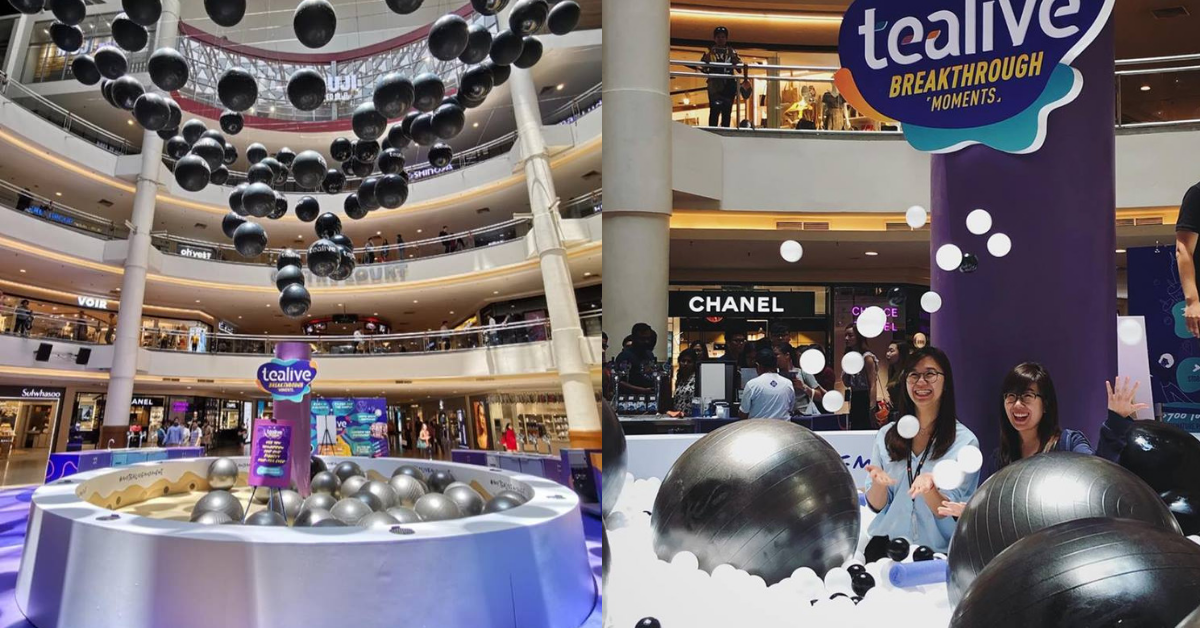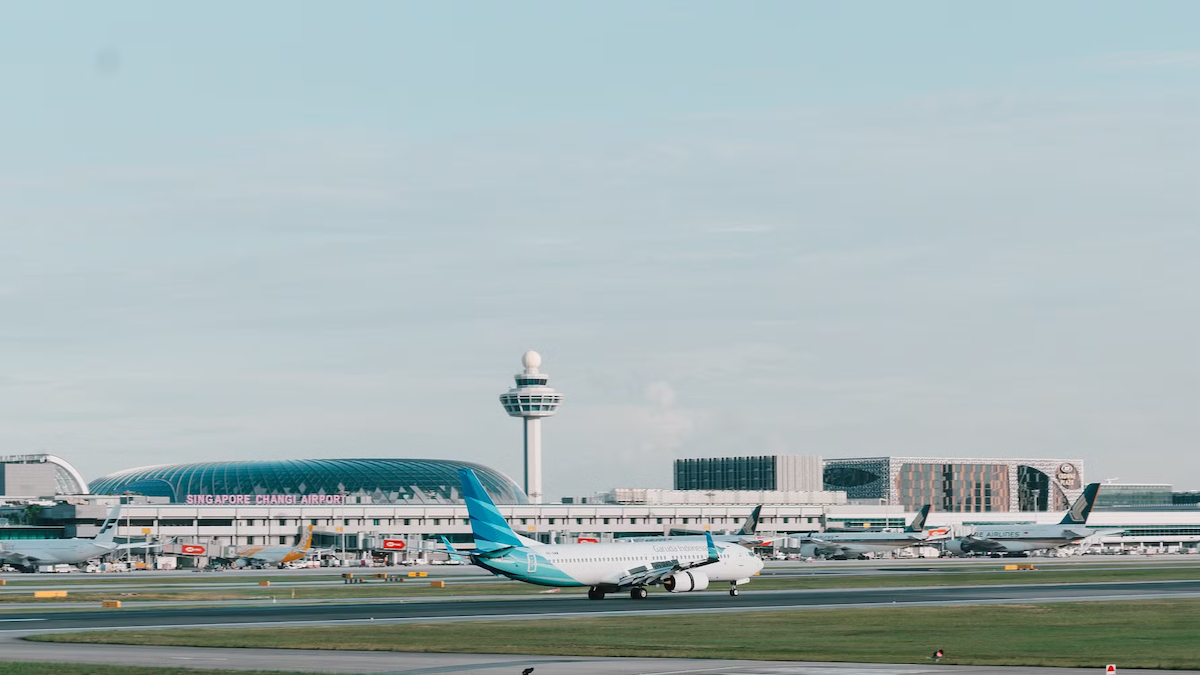Over the past decade or so, Malaysians have seen plenty of food trends come and go, with only few lasting the long race, with bubble tea being one of them.
These days no matter where you look, there’s a good chance that you’re probably within eyeshot of a bubble tea shop or kiosk, and seemingly every one in three people holding a cup as you walk around shopping malls or your neighbourhood shops.
But it wasn’t always the case. At one point the now incredibly popular drink faced a dip in popularity in Malaysia, with many of its early-day purveyors now gone, and only the bigger brands like Chatime and Gong Cha left as remaining survivors.
It wasn’t until mid-2017 or early 2018 that bubble tea once again started coming to the fore of Malaysian minds, thanks in part to the Chatime legal debacle that ended up spawning Tealive, coupled with the entry of several large new bubble tea chains like Koi, followed more recently by The Alley and a whole spate of other international chains.
So now with a resurgence in popularity, it seems the beverage has a genuine second shot at claiming a place among Malaysians as an everyday F&B consumable.
But before it can get there, there remains plenty for its proponents—both sellers and buyers—to do.
What’s In A Cup?
To start, let’s talk about the beverage itself. From the outset, the humble bubble tea—with or without milk, pearls, or what have you—is possibly one of the food trends in recent memory with a great chance to become a real local mainstay.
Its ease of consumption, inexpensive manufacturing, ready accessibility, and affordable price all lend to the bubble tea’s attraction factor as an everyday beverage after lunch, during dinner, or just about whenever.
And unlike many other food trends that ended up not making it, you really can drink a cup of bubble tea every day without tiring, thanks to the endless variety of flavours and condiments.
Most of the drinks are also customisable to your tastes—have it with extra sugar or none at all. Also not to mention, the added benefit of the slight caffeine kick that you can get.
The teas are generally now all brewed (as opposed to the old powdered forms), and many of its key components are even made in-store.
But moving on, let’s discuss how the bubble tea scene itself can actually step up and make the beverage a proper mainstay here.
The Caffeine Comparison
If you want to an example of how a product or concept can transcend from mere trend to public mainstay, you only need to look at the modern coffee industry—the one where humble shoplots have expensive roasting machines and fashionable individuals pouring pretty-looking cups of cappuccino.
When the scene was still budding and people were still used to shelling out only a couple of ringgit for a Kopi O, there was much debate regarding whether or not this new, costly trend of foreign origin would be able to last locally.
During the days when cafés like Artisan Roast, Pulp, and Red Beanbag were relatively new, I remember hearing people calling the concept “fleeting” and “unsustainable”, and I’ll admit that at first I felt the same way.
But in the years since, the coffee industry has gone on to thrive—hundreds of establishments in malls and neighbourhood business centres, and there are plenty of consumers willing to stop by their favourite café for a casual coffee at any time of the day.
The reason? The coffee culture in Malaysia as you see it today was largely built with cohesion and out of passion.

For starters, there’s a considerable amount of love and care thrown into the craft by coffee business owners, and with good reason.
Plenty of the successful coffee joints around the Klang Valley have owners that actually love coffee, and started their enterprises as passion projects—platforms to expose others to the more intricate aspects of espresso consumption and preparation.
You’ll be able to spot plenty of opportunities to engage with the community and get schooled on the intricacies of espresso.
So far, I’ve seen workshops that educate on the unique traits that different beans offer, new methods for brewing, and also the art of an aesthetically-pleasing pour, and barista competitions to see who can craft the best cuppa on the spot.
Add on other opportunities for engagement, and you now have a community that’s become equally as passionate about drinking coffee as much as the people making and selling them, and therefore producing a market that keeps on coming back for more again and again.
If you want proof of this, you only need to trawl social media to find Malaysian groups dedicated to the discussion of coffee, beans, baristas, and cafés worth a visit.
Compared to most other F&B trends, these groups contain members that are more animated and excited about the subject of coffee, and that’s proof enough that you now have a trend that’s here to stay.
Now, before we move on to the next point, let’s also keep in mind that no industry is perfect, and the same applies for the local coffee scene.
But its the inherent concepts that we’re focusing on and that’s where there’s plenty to draw from in terms of elevating an ecosystem from being hype-filled to legitimately self-sustaining.
An Engaging Bubble
You might be thinking.. why compare bubble tea and coffee? Obviously, the bubble tea industry is vastly different with regards to production, manufacturing, and operations, but what’s to say that it all can’t emulate the same success as its espresso-based counterpart?
Taking a step into the real world, the bubble tea industry as it currently stands is seeing a sudden and heavy influx of newer businesses (SS15 in Subang Jaya alone has more vendors than you’d bother counting).
But while it all seemingly bodes well for the longevity of bubble tea in Malaysia, the truth is that the hype could very well die down as soon as it picked up for the second time.
To prevent this from happening, the first thing to be remedied here is the disparity between the two industries with respects to mindsets—there’s more regard for bubble tea as a consumer product rather than something to be crafted with care and passion, and this trickles down into the overall bubble tea culture itself.
For the most part, no real connections exist between bubble tea enterprises and their patrons except for the exchange of money for a product.
There haven’t been workshops, classes, competitions, or community events relating to the craft of bubble tea-making on a scale worth talking about. This has in turn led to a market that doesn’t really care about anything other than sipping their favourite flavours and nothing more.
Proving my point, let’s go back to the part about how there are so many Malaysian coffee groups on Facebook.
Here, the opposite is true for bubble tea—there are hardly proper groups devoted to the beverage, and posts pertaining to the topic on social media are mostly Instagrammable glamour shots.
A bleak prognosis? Not just yet.
If anything, bubble tea aficionados should see this as an opportunity more than a setback, and should be encouraged when you consider that there is already a market that’s ready and waiting for the next step in the bubble tea evolution.
There are consumers that have already accustomed themselves to the idea of making bubble a part of their everyday lives. They’re more than willing to shell out their hard-earned money for tea and pearls in the same way people shell out for a latte.
Don’t be surprised at how much more of their time and money they’re willing to invest if they see more new ideas and more opportunities to get more involved.
So What’s The Next Step?
Although we can’t expect the bubble tea scene to emulate coffee’s in its growth, bubble tea lovers can take heart in the fact that there are at least signs to indicate its players want more for the industry than just to make a financial killing.
Case in point: this week Tealive launched their Breakthrough Moments festival that centred around success—not only theirs, but also their patrons.
Aside from offering cool new flavours and fun activities, the event also provided provided opportunities for community engagement such as getting behind the counter and crafting your own bubble teas, or the opportunity to win cash to achieve a life goal.

I’m not saying that all of this is a sure signal of a shift towards a more inclusive ecosystem—I’m just pointing out that the bubble tea scene could attempt to emulate the coffee ecosystem’s success in different ways if it really wanted to.
The enterprises also need to stop seeing each other as competitors, and instead, become comrades with a shared goal: making bubble tea a staple for Malaysians.
Instead of having individual events, why not collaborate for a large carnival, to showcase each and every brand’s signature brew?
For competitions, their tearistas should take the forefront, showcasing how they ensure the best flavour of the beverages.
It’s a mindset shift that both the brands and consumers need to make.
If the enterprise players—old and new—begin treating their consumers more than just people to sell to and positioning the beverage the right way, there’s a very good chance the second revival of bubble tea in Malaysia could be one that’s permanent.
Feature Image Credit: Tealive









